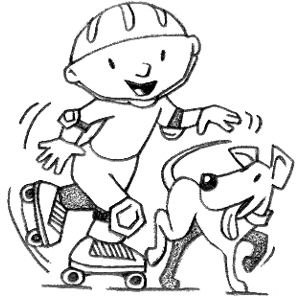Dr. Toy’s Product Safety Tips
Dr. Toy outlines a dozen easy things to remember about toy safety, playing with children, and choosing new toys:

- Specifically for parents with children under the age of six:
Observe what the child is currently playing with in the home. (Particularly
if there is an older sibling in the home.) The younger child may want to try
products that are not age appropriate or have small parts. The child may
also want to play with other small objects and put them in the mouth.
- Look through your current toys at home. Get rid of any broken, chipped,
or discolored products. And if a child loves a product so much that it is
over used and dangerously worn-down, consider replacing it. Make sure the
toys are kept in good repair and are cleaned regularly.
- There are thousands of wonderful, safe products on the market that are
made in the USA, China and other countries. You need to be mindful of the
parts and components that are in the products you are selecting.
- Watch for clutter in your child’s play areas. Are there products that
are not being played with right now? Think about taking some items away for
a month or two and then bringing them back into circulation. We call it
“recycling the toy box.” Children will feel like they have new toys. Current
items get good use and other items return as new finds.
- Know your toy stores. Most retailers are very well informed and can be
your best advocate for appropriately aged products that would fit a
description of your child’s interest.
- Knowledge of your toy store also helps in cases like recalls because
they can be your best information on exactly what product or products can
have a problem. They can also assist in a return policy if necessary. Toy
store owners have a vested interest in protecting children and keeping their
customers happy. They will try to help the consumer.
- Read the labels on the packages. If clear information is not there, you
should be wary. The information should be upfront and clearly visible about
the age group and any other issues that may limit the use of the product to
different demographics.
- You can teach your children to use their toys appropriately; not to
break them, or misuse them. Toys are designed for reasonable use. Beyond
that is when hazards can occur. Children also need to learn to put toys away
carefully and to use them safely.
- Look for products that are appropriate for your child. In addition to
the age range, many parents buy products that are higher ages than their
child because they want their child to be more advanced. This can be its own
hazard in that a frustrated child can act out and not perform to proper age
appropriate behaviors, not just age appropriate skills.
- Research for guidance, such as this list, and other product
recommendations from reliable sources. Look for protection seals, award
testing, and reputable organization’s recommendations.
- If you have any doubts, contact the Consumer Product Safety Commission
www.cpsc.gov there are available to help. See drtoy.com for the CPSC
site and other resources.
- Most importantly, if you have a child with a tendency to put things in
the mouth, you must be extra, extra vigilant. Make sure toys with small or
loose parts are either not used or carefully monitored. Also be sure that
products are cleaned and disinfected, especially if your child attends
childcare, babysitting, preschool or playgroup on a regular basis.
Dr. Toy Tips en español
Let’s play!
This entry was posted on Friday, November 13th, 2009 at 10:38 pm. It is filed under Dr. Toy's Rx, Toy Safety. You can follow any responses to this entry through the RSS 2.0 feed.
